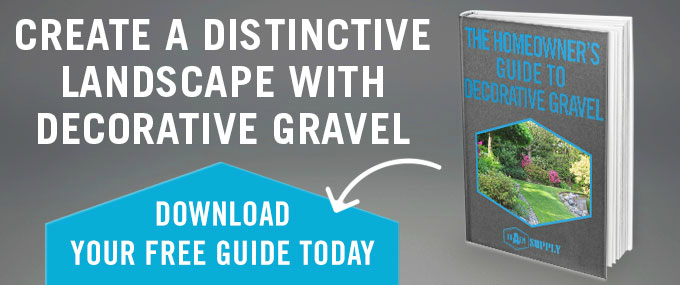Designing a Hardscape Design with Concrete Pavers
If you’re feeling bored and dissatisfied with your current landscape and would like to give it a makeover without spending too much money, concrete pavers are the perfect solution.
Concrete pavers are designed and manufactured to look just like natural stone, featuring interesting cuts, textures, shapes and colors – all at an affordable price. They’re simple to work with, are extremely strong and durable and they provide users with a wide number of design possibilities.
So how can you come up with the perfect design for your dream hardscape using concrete pavers? This post features some of our top hardscape design tips so that you can get the most out of your upcoming project.
Pinpoint Your Motives
Why are you planning on using concrete pavers in your hardscape design to begin with? Are you looking for a way to create an attractive and clear path from your backyard to your swimming pool?
Or do you need a space large enough to accommodate your barbecue, your patio furniture and your closest family and friends? It’s important to sit down and really think about what’s motivating you to give your landscape a makeover.
This will make it easier for you to begin visualizing the overall design and lay the groundwork for all of your other hardscape design plans.
Research Leading Products
Not all concrete pavers are created equally. In order to ensure that you end up working with the highest quality materials, it’s important that you spend some time doing a little bit of investigative work.
Find out who the biggest brand names are in the concrete paver manufacturing business. During this research phase, you’re very likely to come across brand names like Techo-Bloc, Belgard and Cambridge Pavingstones.
These three industry giants have cornered the market on designing and engineering gorgeous concrete pavers that look and feel exactly like natural stone, and they all offer affordable prices. Each of these brands have earned solid reputations for using care and precision throughout the manufacturing process, as well as guaranteeing quality and consistency.
Visit a Local Showroom
Now that you have a better idea about which brands you might be interested in, you’ve probably begun looking through their website portfolios to discover what styles of concrete pavers they have for sale. Seeing an image online is one thing, but being able to see the pavers in person is so much better.
This is why it’s such a good idea to find a local showroom that displays samples of outdoor living spaces and completed projects featuring the concrete pavers from the brands that you have expressed interest in.
Having the ability to see the full-dimensional appearance of these pavers within the context of an outdoor living space, patio furnishings and other hardscaping features will allow you to get the best idea about which pavers would be best for your own hardscape design.
Request Samples
Whether looking online or visiting a showroom, you might find that you fall in love with a specific color of a concrete paver. While the color might look fabulous in the model, or within the scope of someone else’s landscape, it still may be difficult for you to tell whether or not the shade is a good match for your property.
The best way to make up your mind about color is to request samples from the manufacturer. Most concrete paver manufacturers will mail samples to you for free so that you can compare various shades and hues and settle on the perfect fit for your home.
Look Through Design Books
When visiting the websites of leading concrete paver manufacturers, you’ll find that many of them offer tools for inspiring your hardscape design, including design books. These books will feature some of the many projects that specific types of concrete pavers have been used for and featured in.
Browsing through these collections of photos will give you ideas about how other homeowners have incorporated concrete pavers into their hardscape design, and will get your creative juices flowing so that you can come up with a brilliant and exciting hardscape design plan of your own.
Use Hardscape Design Software
We also strongly suggest that you consider making use of helpful hardscape design software tools. These can often be found online, and can be used to help simplify the design process and help you make better decisions.
One of the best things about a design software is that it can take all of the measurements of your yard into consideration and help you create a design that is sized to scale. You’ll have a much better understanding of exactly how your finished project will look in proportion to the remainder of your landscape and its different features, so that you can size things appropriately.
You can use software tools to place other outdoor features like fireplaces on your concrete paver patio and see what it will look like before actually beginning the project. This will also help you make sure that you have enough room to accommodate everything you want to include into your design, while also having plenty of room to move around.
With some design software tools, you’ll find that you can even upload images or drawings for a more accurate or realistic representation of the finished work, while others give you a 3D look and allow you to “fly through” the design and see how it looks from all angles.
Hire a Professional
Some homeowners prefer to hire a professional to join them and help them make smart decisions about their hardscape design plan. Professional landscapers can be very valuable in providing input on how certain concrete pavers may work together or how they can complement other landscaping and architectural features throughout a property.
You don’t just have to hire landscapers, though. Contractors that have been authorized to work with specific concrete paver manufacturers can provide valuable insight when it comes to the design process, and can even provide you with exclusive access to software design tools that might further influence your hardscape design.
Creating Your Perfect Hardscape Design in NJ
When you’re ready to get going with your upcoming hardscape project, Braen Supply is ready to help. As experts in the landscaping and hardscaping industry, our team is perfectly positioned to answer any questions you may have about hardscape design.
We are authorized as dealers for the top brands in concrete paver manufacturing, ensuring that we always have access to the latest product offerings and information.
Feel free to visit our showroom for inspiration. Our concrete paving materials are available at competitive prices and can be picked up or bulk delivered to locations throughout parts of NJ, NY, NYC and PA.

